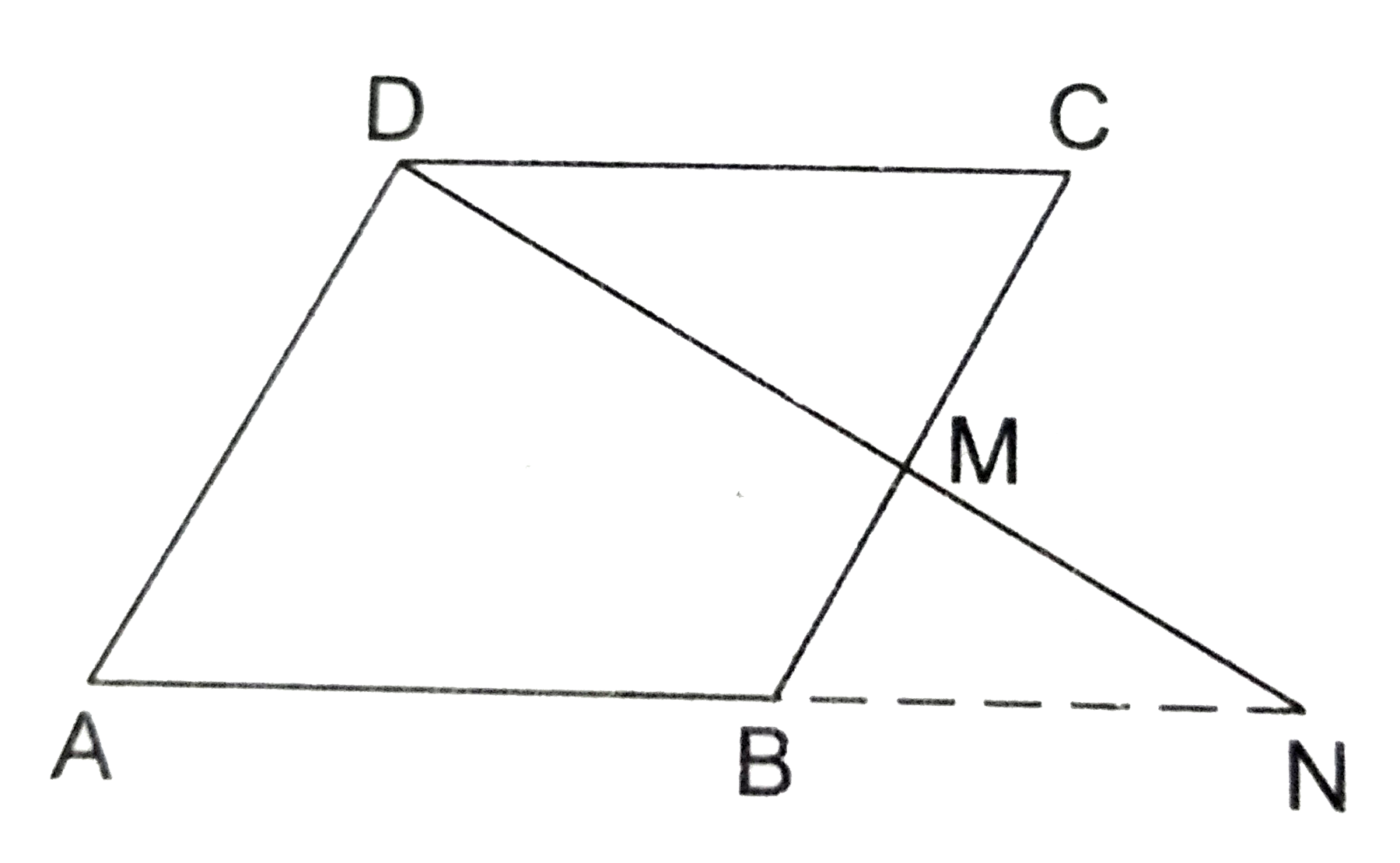M is a point on the side BC of a parallelogram ABCD. DM when produced meets AB produced at N. Prove that
(i)DMMN=DCBN (ii)DNDM=ANDC

In ΔNDA,MB∣∣DA,
⇒NMDM=NBBA⇒DMMN=ABBN⇒DMMN=DCBN[∴AB=DC]
(ii) ⇒NMDM=NBBA⇒NMMD=+1=NBBA+1⇒NM+MDMD=NB+BABA
DNDM=ANAB⇒DNDM=ANDC[∴AB=DC]
Topper's Solved these Questions
- BOOK - RS AGGARWALCHAPTER - TRIANGLESEXERCISE - Exercise 7B19videos
TRIANGLES
- BOOK - RS AGGARWALCHAPTER - TRIANGLESEXERCISE - Exercise 7C13videos
TRIANGLES
- BOOK - RS AGGARWALCHAPTER - TRIANGLESEXERCISE - EXERCISE 7 A1videos
TRIANGLES
- BOOK - RS AGGARWALCHAPTER - T-RATIOS OF SOME PARTICULAR ANGLESEXERCISE - Exercise 1127videos
T-RATIOS OF SOME PARTICULAR ANGLES
- BOOK - RS AGGARWALCHAPTER - TRIGONOMETRIC IDENTITIESEXERCISE - Test Yourself20videos
TRIGONOMETRIC IDENTITIES
Similar Questions
Knowledge Check
- Question 1 - Select One
X and Y are the mid-points of the opposite sides AB and DC of a parallelogram ABCD. Then □AXCY is a ?
ATrapeziumBKiteCRhombusDParallelogram
ABCD is a parallelogram. AB is produced to E so that BE=AB . Prove that ED bisects BC.
View SolutionA circle intersects the side AD of a parallelogram ABCD at P and BC produced at Q. Prove that square PDQC is cyclic .
View SolutionP is the mid-point of side AB of a parallelogram ABCD . A Line through B parallel to PD meets DC at Q and AD produced at R . Prove that (i) AR=2BC (ii) BR=2BQ.
View SolutionP is the mid-point of side AB of parallelogram ABCD. A line drawn from B parallel to PD meets CD at Q and AD produce at R. Prove that :
(i) AR = 2BC (ii) BR= 2BQView SolutionE si a point on side AD produced of a parallelogram ABCD and BE intersects DC at F. prove that △ABE~△CFB.
View SolutionThe side BA and DC of a quadrilateral ABCD are produced as shown in figure 2.19.Prove that x+y=a+b
View SolutionIn the figure, M is the mid point of CA.DM produced meet BA at B N also AN=AM, Prove that BDBN=DCCM.
View Solution

